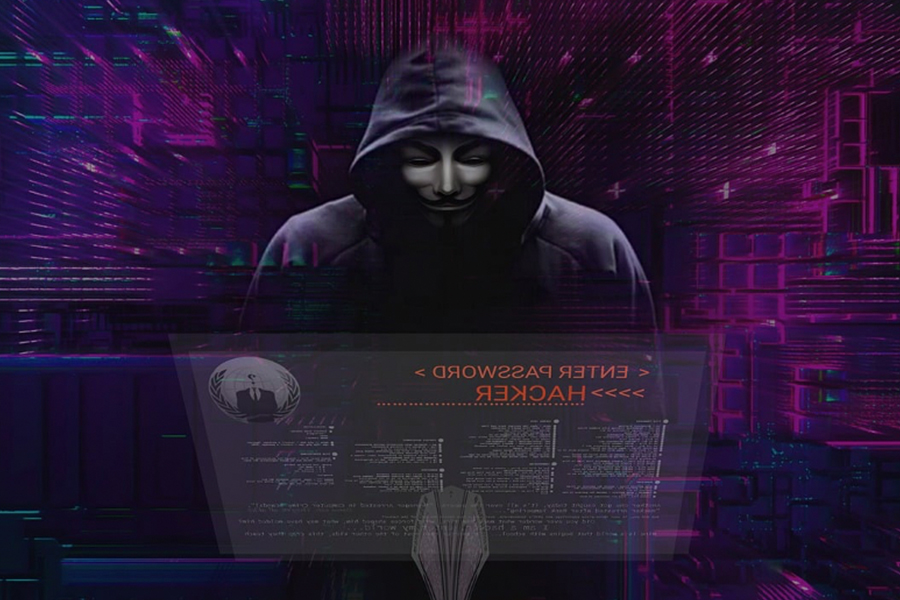Image Alt Text: 3D image of a hacker working on a computer
With the rise of technology comes a plethora of opportunities, but also a new frontier for crime. Cybercriminals are constantly finding innovative ways to exploit vulnerabilities in our digital infrastructure, leaving behind a trail of electronic evidence. This is where digital forensic experts step in, armed with the skills and tools to unravel the mysteries hidden behind screens.
Every day, billions of digital interactions take place across the globe. From emails and text messages to social media posts and financial transactions, our lives are increasingly lived in the digital realm. However, with this digital footprint comes the potential for misuse and exploitation.
According to a report by Cybersecurity Ventures, cybercrime is expected to cost the world $10.5 trillion annually by 2025. This staggering statistic underscores the urgent need for robust digital forensic services to combat cyber threats and protect individuals, businesses, and governments alike.
In the fast-paced world of digital forensics, having a trusted partner can make all the difference. Eclipse Forensics is a leading provider of comprehensive digital forensic services, specializing in forensic audio, forensic video, mobile device forensics, data analysis, and more. With a team of seasoned experts at the helm, Eclipse Forensics is committed to delivering accurate, timely, and actionable insights to clients across various industries.
In this article, we’ll delve deep into the world of digital forensics, uncovering insights from a seasoned data forensic expert. From the challenges of digital investigations to the evolution of forensic techniques and emerging trends in the field, we’ll explore it all.
The Evolution of Digital Forensics
From Floppy Disks to Cloud Storage:
Digital forensics has come a long way since its inception. In the early days, forensic analysts relied on physical media like floppy disks and hard drives to extract digital evidence. However, with the advent of cloud computing and mobile technology, the landscape has undergone a seismic shift. Today, digital evidence can reside anywhere, from smartphones and tablets to cloud-based storage platforms like Dropbox and Google Drive.

The Rise of Mobile Devices Forensics:
With smartphones becoming ubiquitous in modern society, they have also become a treasure trove of digital evidence for forensic analysts. From call logs and text messages to GPS data and app usage history, mobile devices contain a wealth of information that can be invaluable in criminal investigations. As such, mobile device forensics has emerged as a specialized field within digital forensics, requiring unique tools and techniques to extract and analyze data from these devices.
Challenges and Best Practices in Digital Investigations
In the realm of digital investigations, challenges abound, ranging from technological hurdles to legal complexities.
Let’s delve deeper into three key challenges faced by digital forensic expert, along with best practices for overcoming them:
1. Encryption and Data Protection
As encryption technologies continue to evolve, accessing encrypted data has become a formidable challenge for digital forensic experts. Whether it’s encrypted hard drives, secure messaging apps, or encrypted communication channels, encryption can effectively block traditional forensic techniques, leaving investigators with a digital fortress to breach.
Challenges:
Encryption Sophistication:
With the advent of robust encryption algorithms and protocols, encrypted data has become increasingly difficult to crack without the corresponding decryption keys. Advanced encryption schemes, such as end-to-end encryption used in messaging apps like Signal and WhatsApp, pose significant challenges for forensic analysts attempting to intercept and analyze communication data.
Data at Rest and Data in Transit:
Encrypted data can exist in two states: at rest (stored on a device or server) and in transit (i.e., being transmitted over a network). Both present unique challenges for digital investigators, requiring specialized tools and techniques to decrypt and analyze the data without compromising its integrity.
Legal and Ethical Considerations:
While encrypted data provides crucial privacy protections for individuals and organizations, it also raises thorny legal and ethical questions regarding law enforcement’s ability to access and decrypt encrypted communications. Balancing the need for privacy with the imperative of public safety is a delicate balancing act that policymakers and law enforcement agencies grapple with.
Best Practices:
Continuous Training and Education:
In the face of evolving encryption technologies, digital forensic experts must stay abreast of the latest encryption algorithms, protocols, and decryption techniques through continuous training and education. By investing in professional development and staying ahead of the curve, forensic analysts can enhance their skills and adapt to new challenges posed by encryption.
Collaboration with Industry Partners:
Establishing partnerships with technology companies and industry experts can provide valuable insights and tools for decrypting encrypted data. By working closely with encryption experts and leveraging industry resources, forensic analysts can overcome encryption barriers and access crucial evidence in digital investigations.
Legal and Policy Advocacy:
Advocating for legal frameworks and policies that balance the need for encryption with the imperative of public safety is essential for digital forensic experts. By engaging with policymakers, advocating for responsible encryption practices, and promoting transparency and accountability in digital investigations, forensic analysts can shape the legal landscape to better accommodate the challenges posed by encryption.

2. Chain of Custody and Admissibility
Maintaining the chain of custody is fundamental to ensuring the admissibility of digital evidence in a court of law. From the moment evidence is collected to its presentation in court, every step must be meticulously documented to withstand scrutiny from opposing counsel and ensure the integrity and authenticity of the evidence.
Challenges:
Evidence Preservation:
In digital investigations, preserving the integrity of digital evidence is paramount to its admissibility in court. However, digital evidence is inherently fragile and susceptible to alteration or tampering, making proper evidence preservation a daunting challenge for forensic analysts.
Documentation and Record-Keeping:
Proper documentation and record-keeping are essential components of maintaining the chain of custody. However, in the fast-paced world of digital investigations, keeping detailed records of every action taken during the investigative process can be cumbersome and time-consuming, leading to potential gaps or inconsistencies in the chain of custody.
Legal Scrutiny and Admissibility:
In legal proceedings, digital evidence must meet stringent admissibility requirements to be deemed admissible in court. Any lapses or deficiencies in the chain of custody can undermine the credibility and reliability of the evidence, potentially leading to its exclusion from the proceedings.
Best Practices:
Standard Operating Procedures (SOPs):
Developing and implementing standardized operating procedures for evidence collection, preservation, and documentation is essential for maintaining the chain of custody. SOPs provide clear guidelines and protocols for forensic analysts to follow, ensuring consistency and adherence to best practices throughout the investigative process.
Digital Evidence Management Systems:
Leveraging digital evidence management systems (DEMS) can streamline the process of evidence collection, preservation, and documentation, providing a centralized platform for forensic analysts to track and manage digital evidence throughout its lifecycle. DEMS can automate routine tasks, such as evidence tagging, timestamping, and audit logging, reducing the risk of human error and ensuring the integrity of the chain of custody.
Training and Certification:
Providing comprehensive training and certification programs for forensic analysts on the chain of custody procedures and best practices is crucial for maintaining the integrity and admissibility of digital evidence. By equipping forensic experts with the knowledge and skills to properly document and preserve evidence, organizations can mitigate the risk of chain of custody issues arising during digital investigations.
3. Cross-Jurisdictional Challenges
In an increasingly interconnected world, digital investigations often transcend geographical boundaries, presenting unique jurisdictional challenges for forensic analysts. Differing laws, regulations, and cultural norms across jurisdictions can complicate the investigative process and hinder collaboration between international law enforcement agencies and cybersecurity firms.
Challenges:
Legal and Regulatory Variability:
Different countries have varying laws and regulations governing data privacy, electronic evidence, and cybersecurity, creating a complex legal landscape for digital investigations. Navigating these legal and regulatory frameworks requires a nuanced understanding of international law and a keen awareness of jurisdictional boundaries.
Cultural and Language Barriers:
Cultural and language differences can pose communication challenges and impede collaboration between international stakeholders involved in digital investigations. Misinterpretation of cultural norms and language barriers can lead to misunderstandings and friction, hampering the effectiveness of cross-border cooperation.
Extradition and Mutual Legal Assistance:
Obtaining evidence located in foreign jurisdictions often requires cooperation and assistance from local law enforcement agencies through extradition treaties or mutual legal assistance agreements. However, the process of extraditing suspects or obtaining evidence from foreign countries can be time-consuming, costly, and subject to diplomatic and legal obstacles.

Best Practices:
Establishing International Partnerships:
Building relationships and partnerships with international law enforcement agencies, cybersecurity firms, and legal experts is essential for overcoming cross-jurisdictional challenges in digital investigations. Collaborating with trusted partners abroad can facilitate information sharing, mutual assistance, and coordinated efforts to combat cybercrime on a global scale.
Cultural Competence and Sensitivity Training:
Providing cultural competence and sensitivity training to forensic analysts involved in cross-border investigations can enhance communication and collaboration with international counterparts. By fostering an understanding of cultural nuances and respecting diverse perspectives, forensic experts can navigate cultural differences more effectively and build trust-based relationships with stakeholders from different backgrounds.
Leveraging Interpol and Europol:
Interpol and Europol serve as valuable platforms for international cooperation and coordination in combating cybercrime. Leveraging the resources and networks of these international law enforcement organizations can facilitate cross-border investigations, enhance information sharing, and streamline the process of obtaining evidence from foreign jurisdictions.
Emerging Trends in Digital Forensics
In the ever-evolving landscape of digital forensics, staying ahead of emerging trends is essential to effectively combat cybercrime and uncover crucial evidence. Two prominent trends shaping the future of digital investigations are Artificial Intelligence and Machine Learning and Blockchain Forensics.
Let’s delve deeper into each of these trends:
1. Artificial Intelligence and Machine Learning (AI/ML)
As digital data proliferates at an unprecedented rate, the sheer volume and complexity of information present significant challenges for forensic analysts. Traditional methods of analysis often struggle to keep pace with the ever-growing datasets, leading to delays in investigations and potentially overlooked evidence. This is where Artificial Intelligence (AI) and Machine Learning (ML) come into play.
Automation and Efficiency:
AI and ML algorithms have the capability to automate repetitive tasks, such as data parsing, categorization, and correlation, significantly reducing the time and resources required for digital investigations. By streamlining these processes, forensic analysts can focus their efforts on more complex tasks that require human intuition and expertise.
Data Analysis at Scale:
One of the most significant advantages of AI and ML in digital forensics is their ability to analyze vast amounts of data at scale. Whether it’s sifting through terabytes of network traffic or scanning millions of files for malicious activity, AI-powered tools can process data far more efficiently than their human counterparts.
2. Blockchain Forensics

The proliferation of cryptocurrencies like Bitcoin and Ethereum has ushered in a new era of financial transactions characterized by decentralization, transparency, and pseudonymity. While blockchain technology offers numerous benefits, it also presents unique challenges for forensic analysts due to its inherent transparency and immutability.
Tracing and Analysis:
Blockchain forensics involves tracing and analyzing transactions on the blockchain to uncover illicit activities such as money laundering, fraud, and ransomware payments. By analyzing transaction patterns, wallet addresses, and transaction metadata, forensic analysts can identify suspicious behavior and trace the flow of funds across the blockchain.
Cryptocurrency Investigations:
With the rise of cryptocurrency-related crimes, such as ransomware attacks and dark web transactions, blockchain forensics has become an essential tool for law enforcement agencies and cybersecurity firms. By leveraging blockchain analysis techniques, forensic experts can track down cyber criminals, seize illicit assets, and disrupt criminal networks.
Partner with Eclipse Forensics for Unrivaled Expertise
The world of digital forensics is a dynamic and ever-evolving landscape shaped by advances in technology, changes in legislation, and the ingenuity of cybercriminals. To navigate this complex terrain and uncover the truth hidden behind screens, you need a trusted partner with the knowledge, experience, and resources to deliver results. That partner is Eclipse Forensics.
With a proven track record of excellence and a commitment to client satisfaction, Eclipse Forensics is your go-to source for all your digital forensic needs. Whether you require forensic audio analysis, video enhancement services, mobile device forensics, or data analysis, our team of experts is here to help.
Contact them today at (904) 797-1866 to learn more about our services and how we can assist you in your next digital investigation.
Remember, in the world of digital forensics, the truth is often hidden behind screens. Let Eclipse Forensics help you uncover it.



